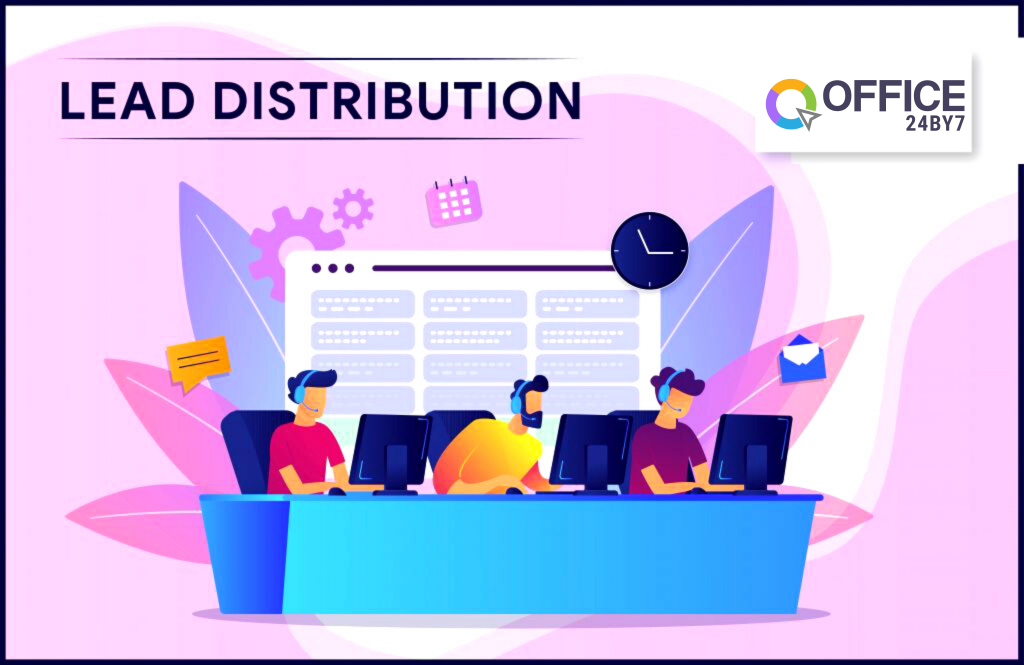
The thought of maximizing conversions during interactions has been in the sales department for a long time. And yes, some strategies and approaches can be employed to engage potential prospects and ultimately achieve your company’s sales objectives. The answer to this situation is an automatic lead routing and a lead distribution system.
It is over-ambitious to expect every prospect we speak to convert into a lead. However, studies reveal that reaching out at the right time to the leads makes it ten times more likely to convert them into sales. Even then, so many companies lag in sales growth.
Several challenges interfere with the sales process down the lane. The challenges include leads from different geographical locations, varying interests and requirements, or, often, too many leads for manual sorting.
What are Lead Routing and Lead Distribution?
Before explaining how significant lead routing and lead distribution processes are, let’s establish a clear understanding of these concepts.
Leads are captured from various marketing sources like chat, website, landing page builder, social media, digital events, emails, virtual numbers, etc. Lead Routing is the process of intelligently assigning these leads to specific sales representatives, teams, or various departments of an organization based on predetermined criteria. These criteria can encompass various aspects such as the geographic location of the lead, industry, lead source, lead score, or other pertinent factors. The goal is to ensure that each lead is directed to the most qualified and suitable salesperson.
Conversely, lead distribution revolves around equitably allocating leads among the sales team members. It keeps at bay situations where a few salespeople have more potential opportunities. It helps to ensure every sales team member has an equitable chance to work on leads. A good lead management tools should allow you to customize routing and automatically distribute the leads.
Distribution Methods
Round Robin
Leads are evenly distributed sequentially. There is a pre-defined sequence, and everybody receives the lead one after the other.
Based on Geographic location
Leads are assigned based on geographic regions. This is practiced if the organization is located in another part of the globe or provides different teams based on the regional language of their geographic regions.
Lead Scoring and Prioritization
Leads are first scored based on various criteria. These include demographic information, behavior, and engagement level of the leads. Higher-scoring leads get more priority and are assigned to highly qualified sales reps. Lower-scoring leads may be assigned to newer or less experienced ones.
Based on Account
Leads can be assigned to those members or departments in the organization based on their prior handling. This happens mostly in business-to-business sales where the same person or department is required to handle the same or similar cases. It is common in industries with long sales cycles.
By Product or Service
Leads can be distributed to their respective team or person based on the product or service they work under. This happens in large companies offering more than one product or service. This ensures that all customers receive superior technical assistance.
Based on the Lead Source
Leads are gathered from different sources such as websites, forms, and social media. These are required to be handled efficiently. For example, leads from your overpriced Google ad campaign must be prioritized over others.
Based on Time
Leads are very time-specific. Some leads are required to be handled as soon as possible. Some leads should be handled only after a particular time. Many may require follow-up calls or meetings. These can be assigned to specific people or departments accordingly.
Manual Assignment
A sales manager or team lead may also require manually interfering in assigning leads based on their knowledge of the sales team’s strengths and weaknesses. This could be beneficial to give the leads a tailored approach.
Dynamic Assignment
Lead routing tools use algorithms and automation to assign leads based on various criteria such as workload, availability, historical performance, and lead characteristics. This method is optimal because it calculates real-time value and optimizes based on it.
Hybrid Distribution
Enterprises combine many of the above methods to create a flexible lead approach.
How to Select a Good Lead Distribution Tool?
While you select a lead distribution tool or a sales CRM with auto lead distribution, you should look for the following functions and features for an efficient and effective lead organization.
As soon as a lead gets captured, it has to be routed and distributed automatically as defined to the concerned team without the manual intervention of a manager or supervisor. The manual assignment process takes time and is impractical when thousands of leads pour into your company.
It is not only about assigning leads, but the process should also be efficient enough to distribute them based on various criteria. The system should ensure that the leads can be distributed based on source, location, skills, and many other criteria as required.
The system should ensure equal or priority-based distribution of leads amongst a particular team of the same skill set.
As soon as the lead gets assigned, it should get notified to the available agents and the reporting managers to ensure that the due response has been initiated and all necessary actions are taken.
Lead tracking along the sales funnel is essential as the lead’s journey is not completed until the assignment.
One size does not fit all. Likewise, defined routing and distribution rules might not fit all industry types. Hence, the platform must ensure customizable options as required by the company.
Still, if you manually assign leads to your sales team, consider one to simplify your process more efficiently.
Office24by7 automation software Lead Management tool combined with intelligent lead routing and distribution methods makes it a dynamic sales CRM for any industry.





